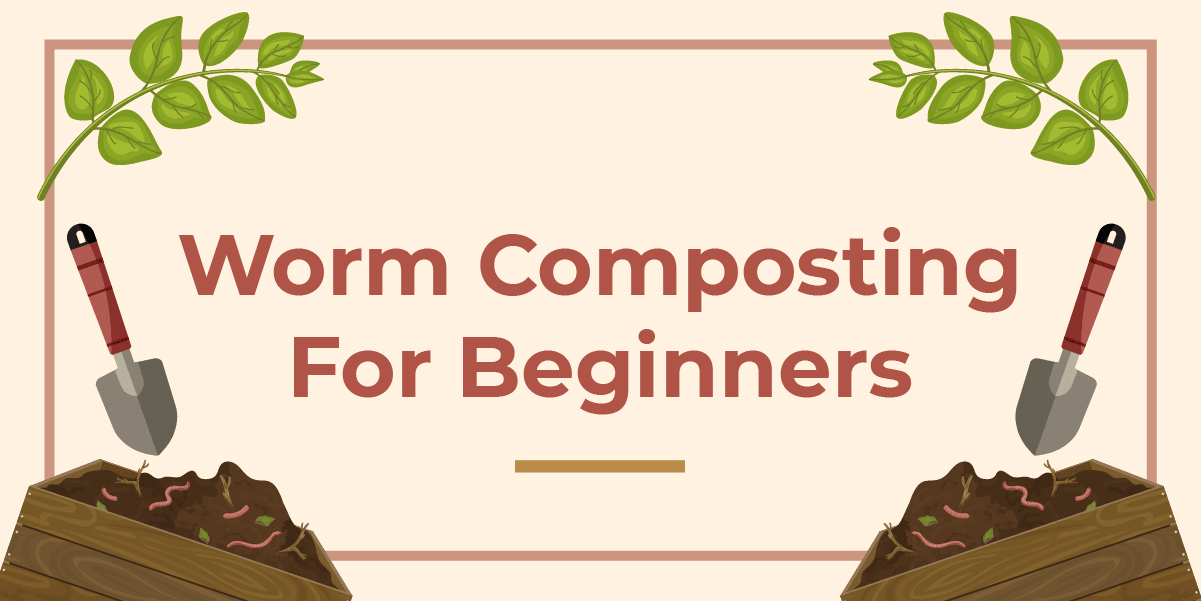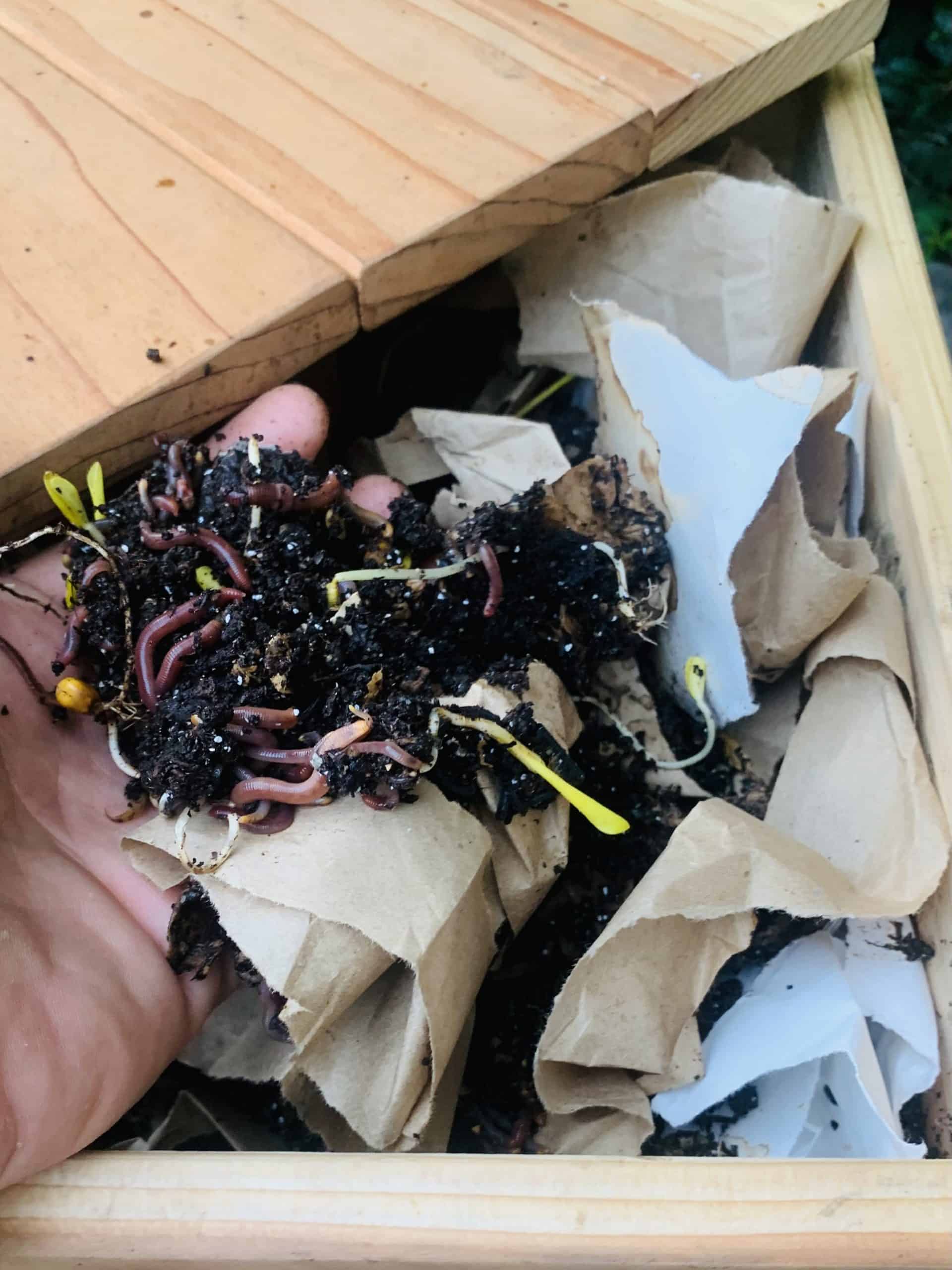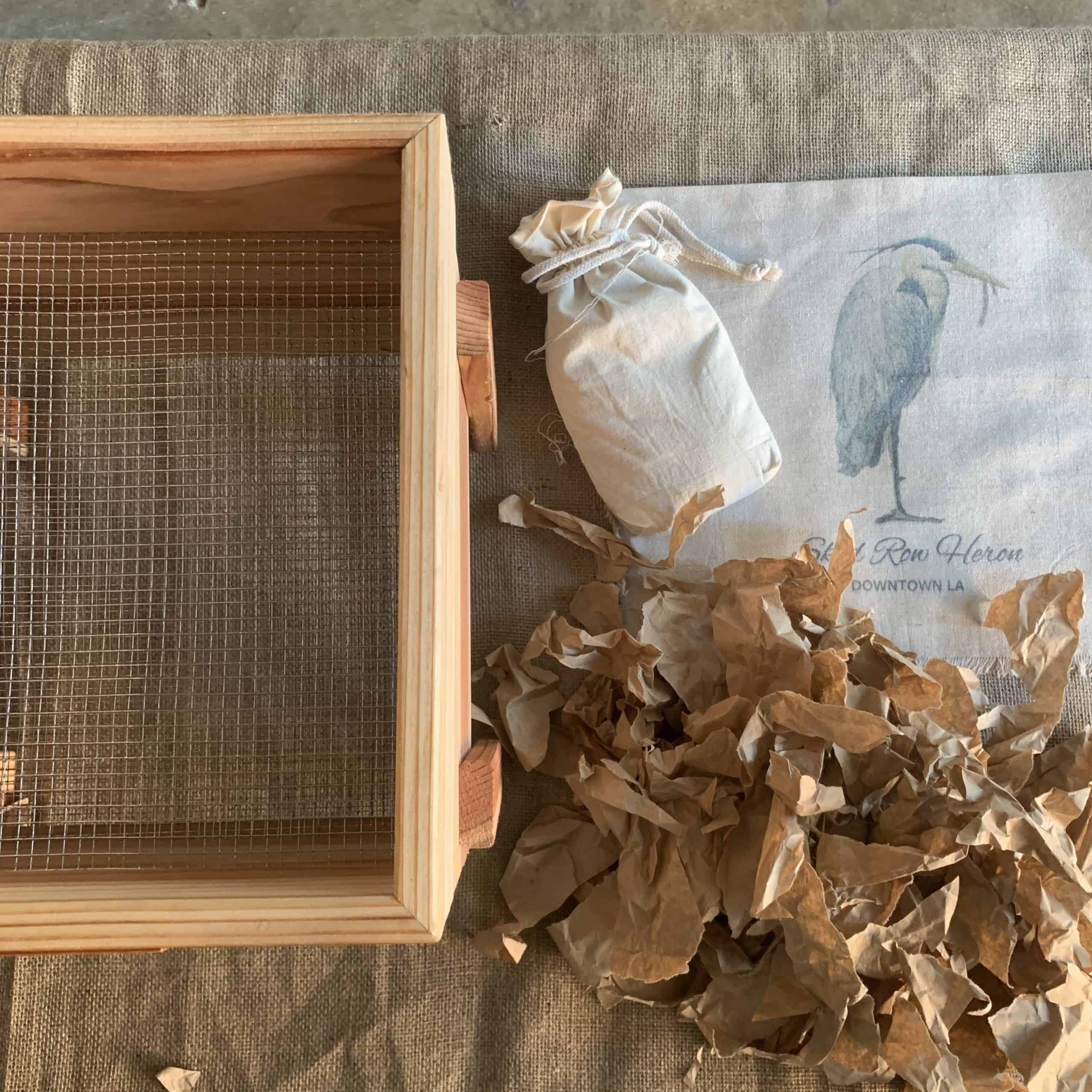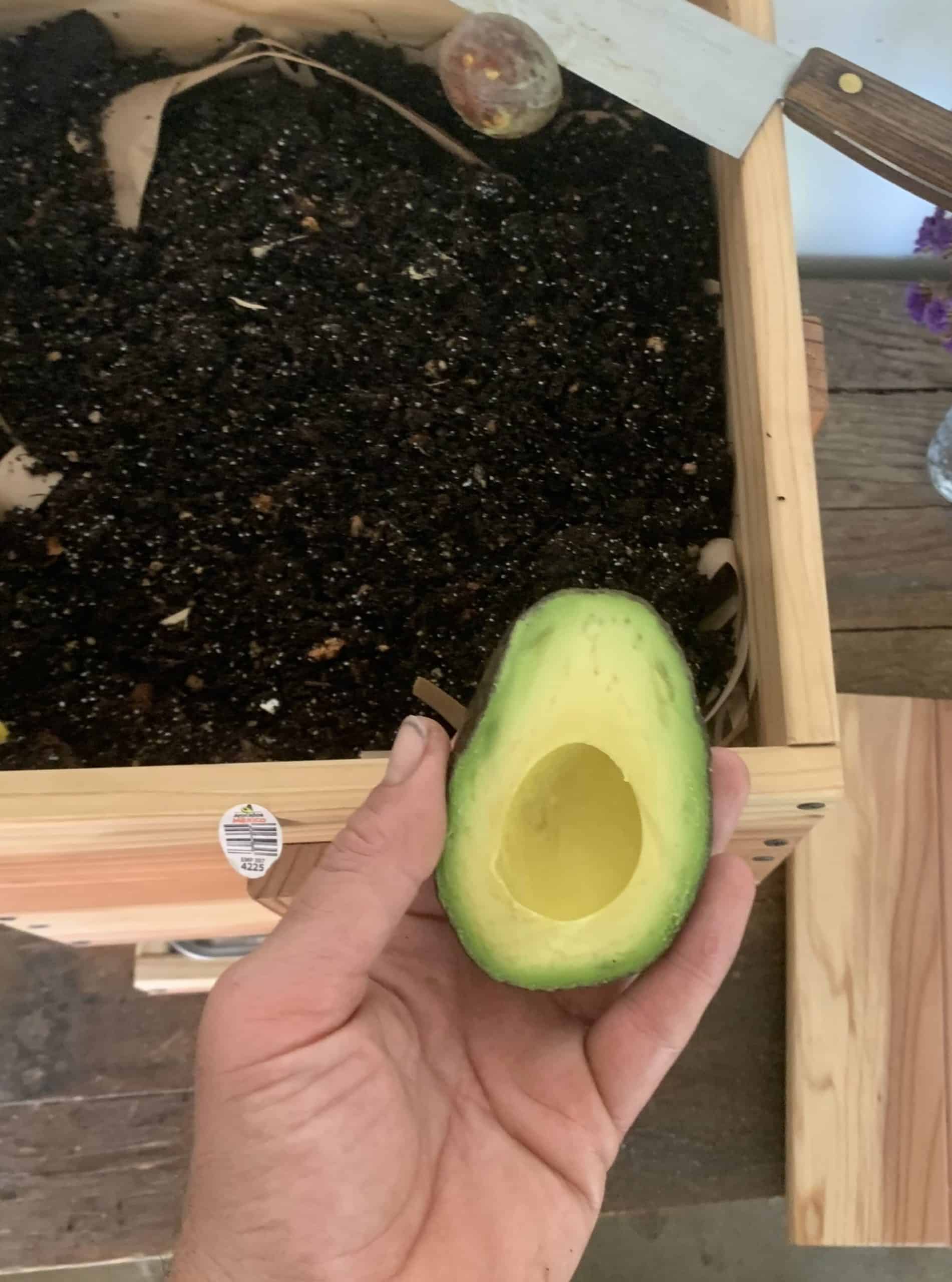I believe anyone and everyone is capable of practicing vermicomposting (worm composting). Even those limited on space, living in a small apartment.
Whether you’re creating soil for an entire farm or your houseplants and windowsill herb garden, the benefits are endless. I’ll teach you the basics of vermiculture and walk you through everything you need to know!
Also, for all visual learners, check out the video at the bottom of the page to set up your bin!
The Compost Bin
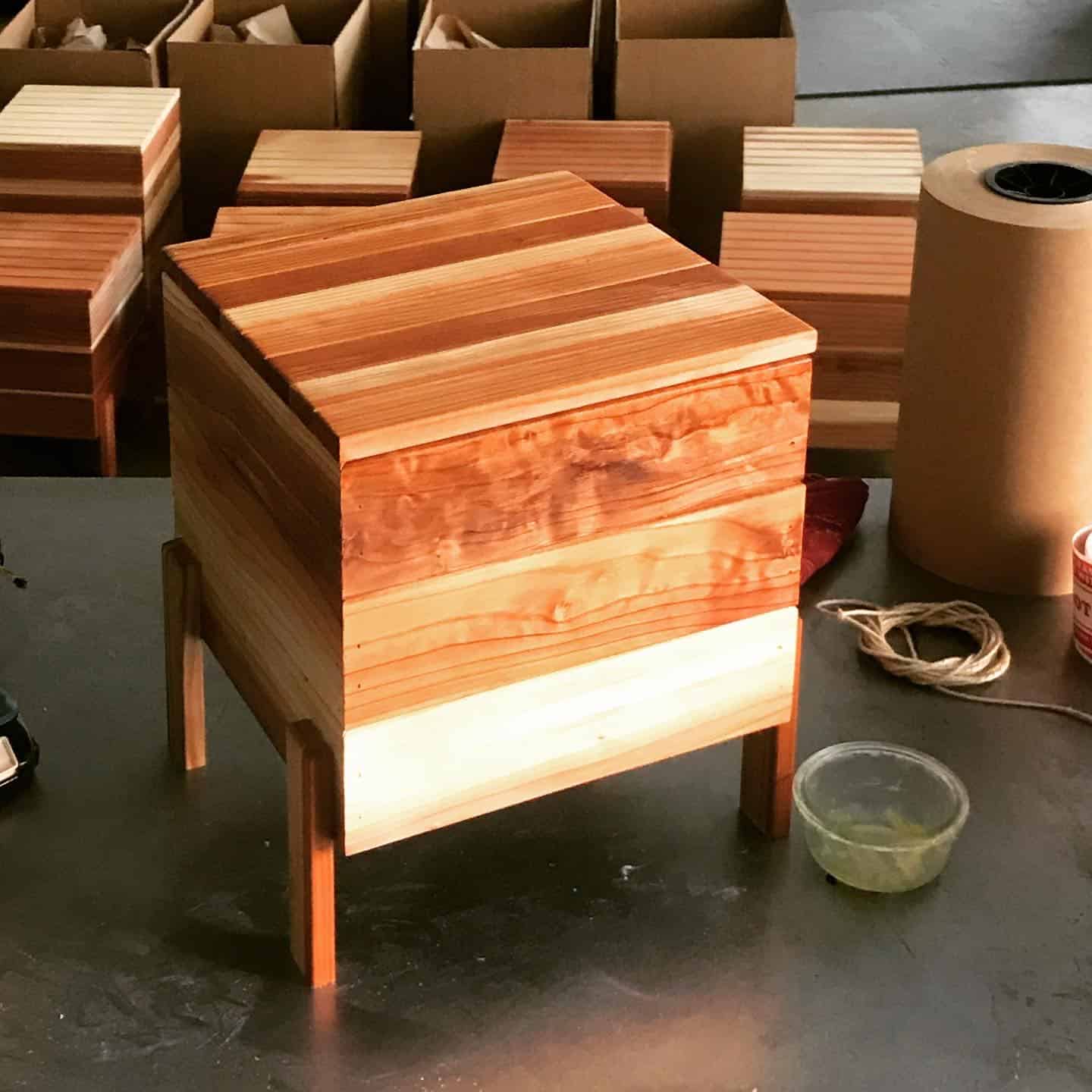
Each bin is made from California redwood or sequoia, which are the most moisture and insect-resistant wood species grown in North America. It’s a long-term relationship. . . this wood won’t decay for more than 15 years.
The Composting Worms (Eisenia fetida) 
Known under various common names such as redworm, brandling worm, panfish worm, trout worm, tiger worm, red wiggler worm, etc., Eisenia fetida is a species of earthworm adapted to decaying organic material. These worms thrive in rotting vegetation, compost, and manure.
They have groups of bristles (called setae) on each segment that move in and out to grip nearby surfaces as the worms stretch and contract their muscles to push themselves forward or backward.
Bedding 
When beginning a vermicomposting bin, add as many composting worms as you can to moist bedding.
The bedding of your bin will not only be the habitat for your worms, but also a food source.
The paper products used mimic dried leaves on the forest floor, thus creating a “natural” habitat for the worms.
Make sure the bedding is moist. Never too wet, think of a wrung-out sponger. The bedding needs to remain loose and not clump together, so that the worms can move about freely and facilitate the composting process.
The following items can be used to make the bedding:
- Newspaper
- Sawdust
- Hay
- Cardboard
- Peat Moss
- Aged Manure (meaning the manure has to be pre-composted before use)
- Dried Leaves
It’s important to note that most vermicomposters avoid using any glossy papers from newspapers and magazines, junk mail and shredded paper from offices, because they may contain toxins which will severely affect the system. Also some cardboard cannot be used if it contains wax or plastic, such as cereal boxes, and other boxes designed to hold food items.
Newspapers and phone books printed on regular, non-glossy pages are great to use because they’re heavily regulated by the FDA and use non-toxic soy and Canola based inks.
Feeding Your Worm Friends
At first, feed the worms approximately 1/2 their body weight in kitchen scraps a day, maximum. After they have established themselves, you can feed them up to their entire body weight.
They will need a combination of the green variety (nitrogen based) and brown products (carbon based). Also, worms have a gizzard similar to birds, and need grit to help break up food for digesting. So things like crushed eggshells, coffee grounds, and garden soil are important to add when feeding your worms.
YES
- Melon & Melon Rinds
- Greens
- Banana Peels
- Crushed Eggshells
- Newspaper
- Egg Cartons
- Paper
- Cardboard
- Coffee Grounds
- Tea Leaves
- Plant Waste
NO
- Meat
- Dairy
- Citrus
- Onions
- Garlic
- Tomatoes
- Potatoes & Potato Peel
- Fruit Pits
*When adding paper products, make sure there aren’t any plastic remnants. Such as plastic from the window of an envelope or packing tape.
FAQs: Worm Composting Essentials
Q: What is Eisenia fetida, and why is it commonly used in worm composting?
Eisenia Fetida, or the red wiggler or tiger worm, is a species of earthworm that’s particularly effective at breaking down organic waste into nutrient-rich compost. These worms thrive in decomposing matter, reproduce quickly, and can consume their own weight in food each day. Bon appétit!
Q: How do I care for Eisenia fetida worms in my compost bin?
Maintain a moist environment, provide a balanced diet, and avoid extreme temperatures. The compost bin should be kept as damp as a wrung-out sponge, and food scraps like fruit and vegetable peels, coffee grounds, and crushed eggshells should be added regularly. Avoid feeding them acidic or oily foods. Keeping the bin in a cool, shaded area will help maintain the optimal temperature range of 55-77°F (13-25°C).
Q: What organic waste can I add to a worm compost bin?
You can add waste like fruit and vegetable scraps, coffee grounds, tea bags, crushed eggshells, and small amounts of bread and pasta. Avoid adding meat, dairy, or oily foods, which can create odors and attract pests.
Q: How often should I feed my worms?
Usually once a week. The amount of food depends on the size of your worm population; a good rule of thumb is to add food equal to the weight of your worm population. If there is uneaten food from the last feeding, hold off on adding more until the worms have finished their previous meal.
Q: What should I do if my worm compost bin smells bad?
A foul odor usually indicates that the bin is too wet, overfed, or contains inappropriate food scraps. Make sure the bin is as damp as a wrung-out sponge, and remove any excess or inappropriate food. Adding dry bedding materials like shredded paper or cardboard can help balance the moisture levels.
Q: How do I harvest worm compost?
Push the bin’s contents to one side and add fresh bedding and food to the empty side. Over a few weeks, most worms will migrate to the side with fresh food. You can then scoop out the finished compost. Alternatively, you can use light to drive the worms down and scrape off the top layers of compost.
Q: Can worm composting be done indoors?
Yes. Keep the bin in a cool, dark place, like a cupboard or basement, and follow the same guidelines for moisture and feeding as you would for an outdoor bin.
Q: What bedding materials are best for a worm compost bin?
Suitable bedding materials include shredded newspaper, cardboard, coconut coir, and partially decomposed leaves. The bedding should be moist but not soaked, providing a comfortable and aerated environment for the worms.
Q: Are there any pests that might invade my worm compost bin?
Fruit flies, mites, and ants can sometimes invade a worm compost bin. To minimize pest problems, avoid overfeeding, keep the bin covered, and ensure proper moisture levels. If pests persist, reduce the bin’s moisture and add a layer of dry bedding on top.
Q: How long does it take for organic waste to turn into compost?
The composting process typically takes 3 to 6 months, depending on the worm population, type of waste, and environmental conditions. Regularly maintaining optimal conditions and a well-balanced diet for your worms can speed up the process.
Q: What should I do if my worms try to escape?
Worms may try to escape if the conditions in the bin are unfavorable, such as being too wet or too dry or having an improper pH balance. Check the moisture level, food quality, and temperature, making adjustments as necessary. Ensuring proper ventilation and a secure lid can also help keep your worms in their bin.
Q: Can I name my worm friends? 🙂
You can, but they may not respond like a house cat or dog. Keep trying, though!

